The skin made up of 3 main layers: the epidermis, the dermis, and subcutaneous tissue (fat).
The epidermis is the tough outer layer of the skin which is creates new skin cells. Within this layer, our skin pigment is created and acts as a protective layer to shield the body from the external environment. The epidermis is made up of five layers which continually generate new cells to replace the mature dead cells on the surface which are constantly shed.
The dermis is the middle layer made up of fibroblasts, collagen, and elastin fibers. This provides nutrients, physical support, strength, structure, hydration, and flexibility to the skin. The dermis layer also contains hair follicles, sweat glands, sebaceous glands, apocrine glands, lymphatic vessels, and blood vessels. Collagen and elastin in the dermis are arranged in woven dense fibers which provide the dermis with the ability to stretch and contract. Around 70% of the dermis is made up of collagen proteins. Collagen fibers exist in a constant state of flux, being degraded by proteolytic enzymes, and replaced by new collagen fibers.
The subcutaneous tissue (fat) connects the skin to the underlying bone and muscle. It is a layer of connective tissue and adipose tissue (fat) which is used mainly for fat storage as well as insulation and cushioning for the dermis and epidermis.
The effect of ageing on skin as we age, the body’s ability to replenish collagen naturally decreases by about 1.5% per year. This results in stiffening and breakage of the remaining collagen fibers, along with thickening and fraying of the elastin fibers. This degradation impacts the skin’s structure, elasticity, and firmness, resulting in the appearance of aged and wrinkled skin.
What is collagen?
Collagen is the most abundant protein in your body, accounting for about one-third of its protein composition. It is one of the major building blocks of bones, skin, muscles, tendons, and ligaments. Collagen is also found in many other body parts, including blood vessels, corneas, and teeth. You can think of it as the “glue” that holds all these things together. Collagen is the most abundant protein in the human body, found in the bones, muscles, skin, and tendons. It constitutes one-third of the total protein found within the body and makes up three-quarters by weight of dried skin.
What destroys collagen?
Perhaps it is even more important to avoid the following collagen-destroying behaviors:
- Eating too much sugar and refined carbs. Sugar interferes with collagen’s ability to repair itself.
- Getting too much sunshine. Ultraviolet radiation can reduce collagen production.
- Smoking reduces collagen production. This can impair wound healing and lead to wrinkles.
- Some autoimmune disorders, such as lupus, can also damage collagen.
Nutrients that increase collagen production
Our body makes procollagen by combining two amino acids — glycine and proline. This process uses vitamin C. You may be able to help your body produce this important protein by making sure you get plenty of the following nutrients:
- Vitamin C. Large amounts are found in citrus fruits, bell peppers, and strawberries.
- Large amounts are found in egg whites, wheat germ, dairy products, cabbage, asparagus, and mushrooms.
- Large amounts are found in pork skin, chicken skin, and gelatin, but glycine is also found in various protein-containing foods.
- Large amounts are found in organ meats, sesame seeds, cocoa powder, cashews, and lentils.
Would laser or liked technology build collagen?
Collagen levels deplete naturally over time, and there is no way to prevent this inevitable process of ageing. Furthermore, the process of building collagen with nutrients is a very slow process, however thru use of lasers and other liked technology, the growth of collagen, elastin, and melanin can all be stimulated with great results.
What are my options?
- Microneedling RF Technology – The treatment is a form of controlled skin injury. The damage stimulates the growth of healthy new skin, which can benefit common skin issues like acne scars and wrinkles.
- Picoway – It uses short laser pulses to stimulate natural collagen production for a younger-looking skin tone. After treatment, your complexion will be brighter, firmer, and younger-looking.
- Erbium Laser – This is a skin treatment in which a fluctuating and concentrated light beam is aimed at areas of the skin that need treatment. It has the effect of essentially removing the topmost layers of the skin a layer at a time.
- LightPod Neo Laser – The 1064nm laser wavelength is to deliver energy to the deeper tissue for collagen remodeling while also diminishing vascular and pigmented blemishes closer to the surface. But the key to the clinical efficacy of Neo is it’s MicroPulse-1064TM technology – providing a very high-power pulse within a safe pulse duration.
- Medical Grade Peel – Although it will not stimulate collagen, however, they are great to be used with certain laser treatment for maximum effectiveness. This will enhance collagen production.
Summary
Every one of the above options could be viable option, however, to determine the best and most effective option, it is important to understand the structure of skin before treating a patient. During our initial consultation, we utilize our computerized imaging technology to allow our providers to examine the layers of skin and then customize the rihgt and best package for you. To book for this appointment, click here>>>

